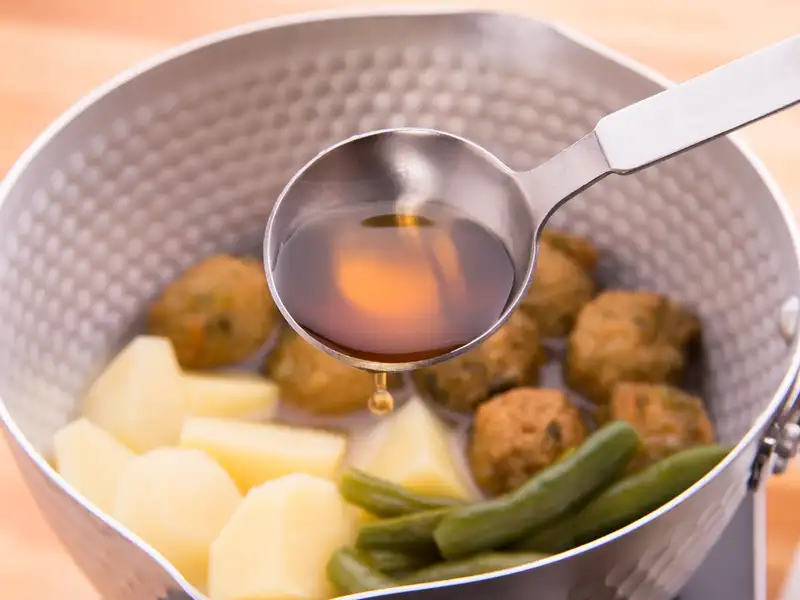Rice wine is a unique variety that isn’t always properly understood by many Western wine fans. For example, Shaoxing Wine is a popular variety that is a great option for many people who love cooking wines. Understanding this wine and its many substitutes should help improve your wine-based cooking experience and ensure that you get the high-quality flavors you want and deserve.

What Is Shaoxing Wine?
Shaoxing Wine is a Chinese cooking rice wine made only for cooking.
Don’t try drinking it separately from cooking! It’s not very tasty when not used as a cooking ingredient but is fantastic when combined with many traditional Chinese dishes, such as anything you make with soy sauce.
It helps to add a little depth and flavor to your foods, including various sauces, soups, and noodles.
However, what happens when you run out of Shaoxing Wine or simply can’t find it in your area? It’s not always available at wine shops and is more common in Chinese food markets.
Thankfully, there are many alternatives that can do the trick. Let’s take a look at some!

Suitable Shaoxing Wine Replacements
The following Shaoxing Wine substitutes will work perfectly in a pinch when you can’t find Shaoxing Wine or run out just before cooking your next big Chinese meal.
Dry Sherry

Dry sherry is a popular cooking wine that you can use to cook a variety of meals, including sauces, stews, and even meats.
Dry sherry is typically sweeter than the very, very dry Shaoxing Wine, so you should probably use about half as much as you would normally use when cooking.
The main advantage of dry sherry over other alternatives is its easy availability.
Simply put, it’s very easy to find this wine just about anywhere, particularly in cooking shops.
Try to identify the best option for your needs based on your taste and remember: use less, not more, when cooking.
Dry Vermouth

In a pinch, dry vermouth can work pretty well as a Shaoxing Wine substitute.
It has a pretty similar dryness though it has more of an alcoholic kick.
Thankfully, the alcohol will cook away while you’re preparing your food, though the overall taste might still be a bit strong.
This option is a good choice when you’re cooking meat-based dishes.
Vermouth just has the rich and diverse flavors that go perfectly with meat, making this a strong pairing option.
Consider this alternative if you can’t find any other replacements, as it isn’t the most accurate replacement.
Sake

Sake is a very good Shaoxing Wine substitute because it has a similar rice-based design and is also used in many Asian cooking recipes.
Obviously, Sake is Japanese while Shaoxing Wine is Chinese, and there is a pretty big difference between these two winemaking traditions.
For example, when using regular sake, you just use half a cup per every one cup of Shaoxing you’d normally use.
Cooking sake can be served at a 1-to-1 ratio, thankfully.
This option goes well with sauces because it is slightly sweeter and should thicken up very well as a marinading option.
Dry White Wine

Now, here’s the thing about dry white wine. You can use it as a substitute for Shaoxing Wine if absolutely necessary.
However, we strongly suggest you look for other alternatives if you can because it’s not the best replacement.
It’s typically too sweet and flavor-rich to work well for Shaoxing Wine.
There’s a trick to using this alternative for Shaoxing Wine: use just one-third cup to every one cup of Shaoxing Wine you’d normally use.
Add one-half teaspoon of lime juice to the wine, as well. Doing so helps balance its flavor and adds extra acidity that makes it closer to Shaoxing Wine.
These white wines are suitable for cooking.
And although red wines are used for cooking, stay away from them for substituting a Shaoxing wine. They are not suitable.
Mirin

Mirin is like sake in that it is a Japanese cooking wine often used, much like Shaoxing.
As a result, it is a good alternative for this Chinese wine because it will add more seasoning and thickening to your dishes without overpowering their taste.
It also has a softer body and less alcohol than Sake.
Fair warning! Mirin is also sweeter than Shaoxing, but not by a large amount.
The trick here is not to cut back on the Mirin you use but on other sugars used.
If you don’t use any other sugars, you can use about three-quarter cups for every one cup of Shaoxing you’d normally use.
Rice Vinegar and Grape Juice

We’re getting to the real nitty-gritty options here now!
Rice vinegar and grape juice isn’t exactly the best option because it’s typically a bit sweeter and fruitier than the rice-based Shaoxing.
You can mix one-half cup white grape juice and one tablespoon rice vinegar for every cup of Shaoxing wine.
This option is best if you have no other choices and simply don’t have the time to go to the store.
It will work fairly well if you follow the formula above but doesn’t quite have the same texture as Shaoxing, meaning it’s best to limit this option as much as possible.
Remember, rice vinegar is not the same as rice wine vinegar, so choose accordingly.
Related: What to use instead of rice wine vinegar.
Make Your Own Rice Wine
Now, this option is a great choice if you want to expand your wine experience and get into making rice wine.
This process requires cooking rice, soaking it for an hour, straining the rice from the water, steaming the rice, putting yeast in a bowl, combining the rice with the yeast, and letting it ferment for several days.
This creative solution is a lot of fun and creates a wine pretty similar to Shaoxing Wine.
The taste might not be exactly the same, and the texture perhaps a bit less cutting.
However, the overall experience should be close enough to Shaoxing to make it worth the try.
Shaoxing Wine FAQ
Can I Use White Wine Vinegar Instead of Shaoxing Wine?
While you can technically use White Wine Vinegar in place of Shaoxing Wine, we don’t recommend it. Simply put, vinegar is not wine, and the taste differences can be quite wide.
White Wine Vinegar may work if you have no other options, but even then, it’s imperfect.
Can I Use Rice Vinegar Instead of Shaoxing Wine?
Typically, Rice Vinegar and Shaoxing Wine are not similar enough to really work well as a replacement. We strongly suggest skipping this option.
After all, while Rice Vinegar is somewhat similar to Rice Wine, the tastes and textures do differ quite heavily.
Is Shaoxing Wine The Same as Rice Vinegar?
No, Shaoxing Wine is a completely different type of fluid than Rice Vinegar and shouldn’t be used in recipes calling for Rice Vinegar.
Is Shaoxing Wine The Same as Rice Wine Vinegar?
No, Shaoxing Wine and Rice Wine Vinegars are different enough that you should probably not use them interchangeably. It’s a better idea to use any of the alternatives mentioned in the previous section.
Can I Omit Shaoxing Wine?
While any Chinese gourmet chef will balk at this suggestion, you can technically ignore Shaoxing Wine when cooking your Chinese dishes. They’ll lose a lot of taste and subtly, but you can do without it.
In Summary
As you can see, finding a unique replacement for Shaoxing Wine should help keep your Chinese cooking tasty and memorable.
Follow these suggestions and make sure that you fully understand the likely taste differences.
Doing so will minimize your problems and ensure you get a great experience.
- Shrimp Cocktail (and More) Wine Pairing Guide - 09/06/2022
- What Wine Serving Sizes Look Like: Standard Size and More - 08/06/2022
- How Much Sugar is in Wine: Glass and Bottle Sugar Content - 08/06/2022






